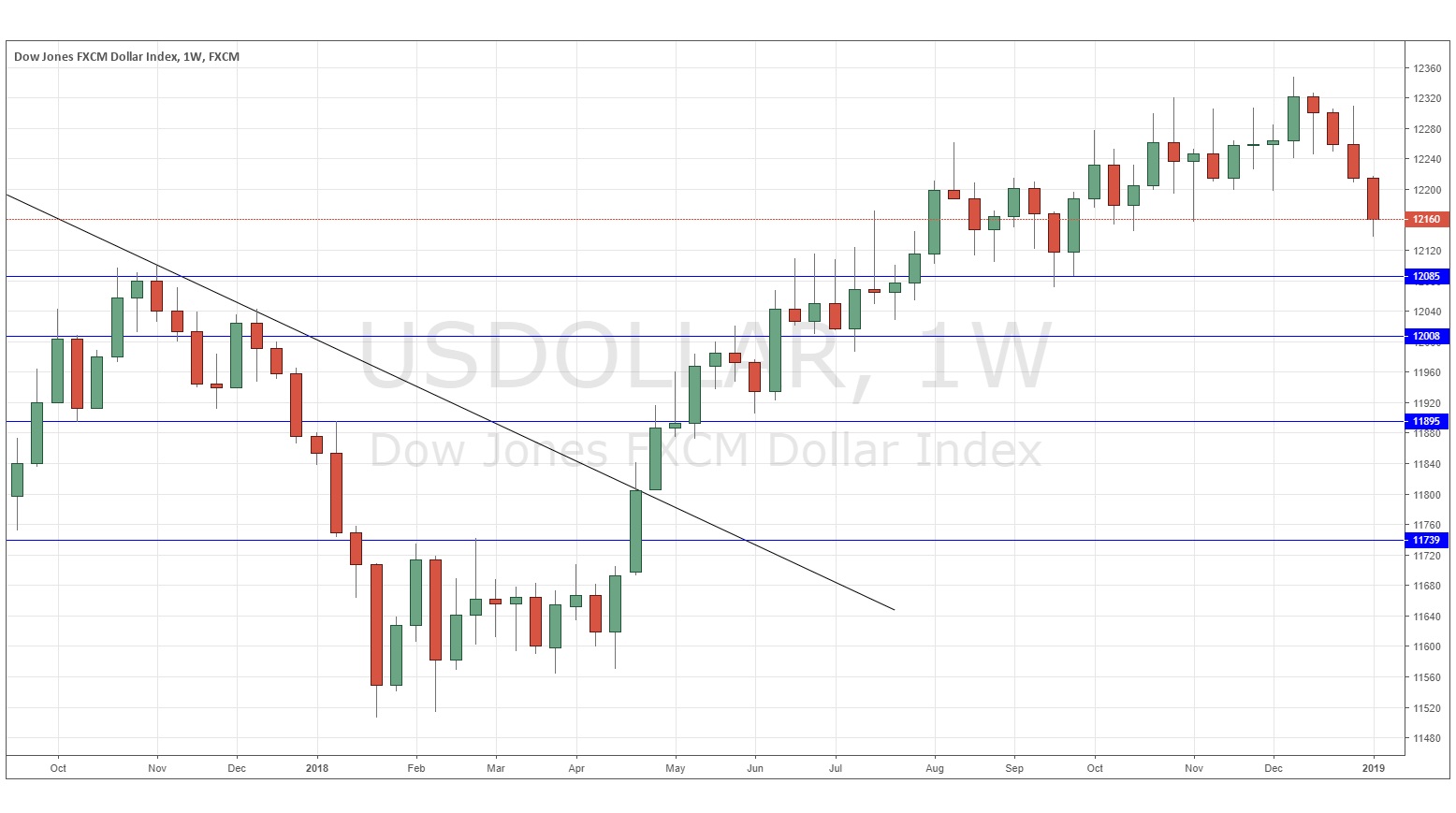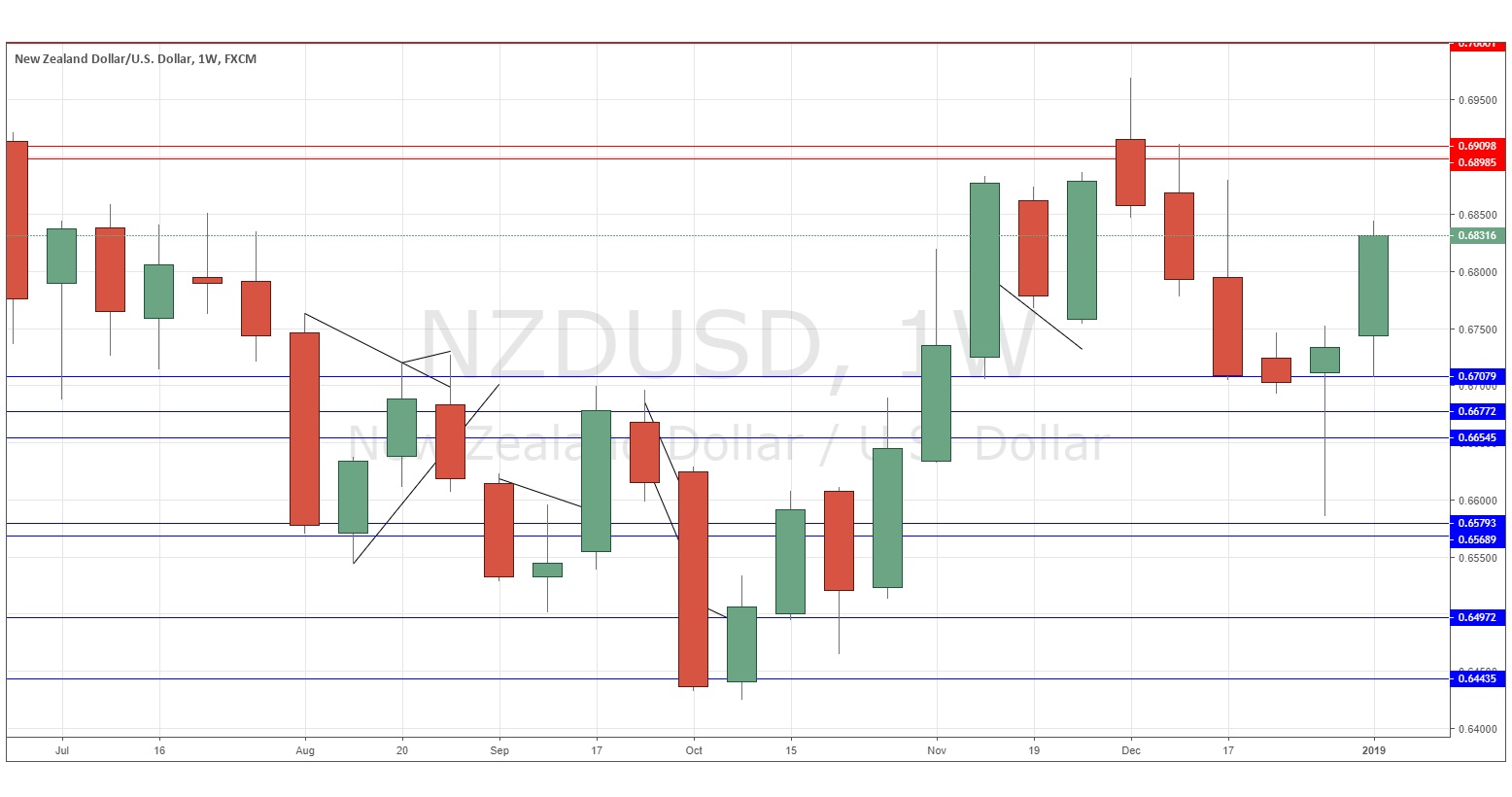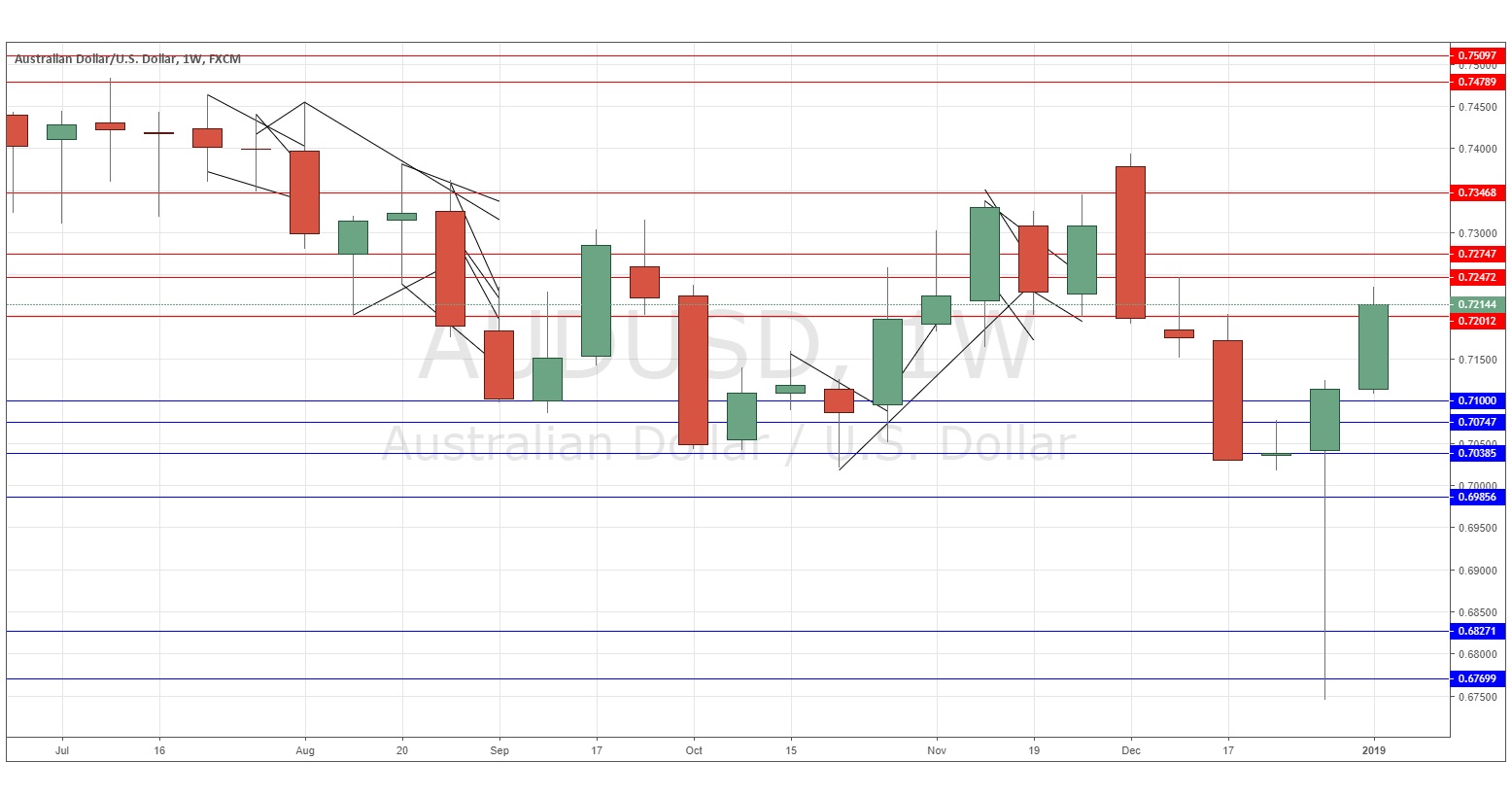The difference between success and failure in Forex trading is very likely to depend upon which currency pairs you choose to trade each week, and not on the exact trading methods you might use to determine trade entries and exits. Each week I am going to analyze fundamentals, sentiment and technical positions in order to determine which currency pairs are most likely to produce the easiest and most profitable trading opportunities over the next week. In some cases it will be trading the trend. In other cases it will be trading support and resistance levels during more ranging markets.
Big Picture 13th January 2018
In my previous piece last week, I was long Silver/USD only. This pair fell by 0.61%, producing a loss.
Last week saw the strongest rise in the relative value of the Australian Dollar, and the strongest fall in the relative value of the U.S. Dollar.
Last week’s Forex market was relatively quiet and was dominated by a strong recovery in Crude Oil and other commodity currencies, and a lesser recovery in the stock market. The British Pound also strengthened as the British Parliament took steps to prevent a “no deal” Brexit outcome. As I thought, as the Brexit vote approaches this Tuesday, the British Pound has begun to experience more volatility.
This week is likely to be dominated by the Brexit vote and some other key items of British economic data, and G20 meetings towards the end of the week.
Fundamental Analysis & Market Sentiment
Fundamental analysis remains unclear on the U.S. Dollar. The stock market continued to recover from its lows but remains a bear market technically. There are still major fears over the seeming high sensitivity of the economy to any further rate hikes, as evidenced by the fact that the FOMC appears to have given up on its originally planned further rate hikes for 2019. The ongoing trade dispute with China appears to be moving towards a positive resolution, which is a good sign. However, the government shutdown appears to be an intractable dispute. JPMorgan currently suggest that the market is pricing in a 60% chance of an economic recession in the U.S. occurring at some point during 2019.
Brexit remains an unknown, with Parliament scheduled to vote on approving the deal agreed by the European Union on 14th January. In the unlikely event that the vote passes, the British Pound’s fundamental outlook would strengthen decisively, and probably lead to a significant rise in value. However, even a defeat probably will not hurt the Pound so much, as it appears increasingly clear that the British Parliament will vote for whatever it takes to avoid a “no deal” Brexit.
The Australian Dollar is especially sensitive to developments in the trade war between China and the U.S.A. as I noted last week, and the increasingly positive signs there are strongly boosting the currency and probably helping the general recovery in commodities and the commodity currencies too.
Technical Analysis
U.S. Dollar Index
The weekly price chart below shows that last week the USD Index fell again, printing a bearish candlestick that was not large but did close quite close to its low. This is a bearish development, and the long-term bullish trend remains in question as we now have the price lower than it was 3 months ago, which is a bearish sign. However, the price is still up over 6 months, which is conversely a fairly bullish sign. There is downwards momentum in the Dollar, and although the technical picture is a little mixed, the Dollar is beginning to look bearish technically.
The major difficulty in trading the current market is that momentum almost everywhere is counter-trend, as “risk on” assets are rising quite strongly against the long-term “risk off” bear market trend. While the “risk off” trend may well reassert itself quickly upon any significant bad news for more developed global economies, it would be dangerous to rely upon this. For this reason, I am looking to trade “risky” assets against the U.S. Dollar, as the latter is at least in a 3-month bearish trend. The only suitable candidates for this are the NZD/USD and AUD/USD currency pairs. The NZD and AUD are highly positively correlated in their price movement, so although diversification between the two helps, it would probably be wise to trade half the normal size with each currency pair.
NZD/USD
The weekly chart below shows last week produced a large bullish candlestick which closed very near its high price following the previous week’s large bullish pin candlestick. Additionally, the price has room to rise before meeting the next resistance level. A further bullish sign is that the price is above its level of three months ago. As the market is currently strong on commodity currencies and the U.S. Dollar is weak, it seems to make sense to be bullish on this currency pair.
AUD/USD
The weekly chart below shows last week produced a bullish candlestick which closed very near its high price following the previous week’s extremely large bullish pin candlestick. A further bullish sign is that the price is above its level of three months ago. As the market is currently strong on commodity currencies and the U.S. Dollar is weak, it seems to make sense to be bullish on this currency pair.
Conclusion
Bullish on the Australian and New Zealand Dollars, bearish on the U.S. Dollar.




